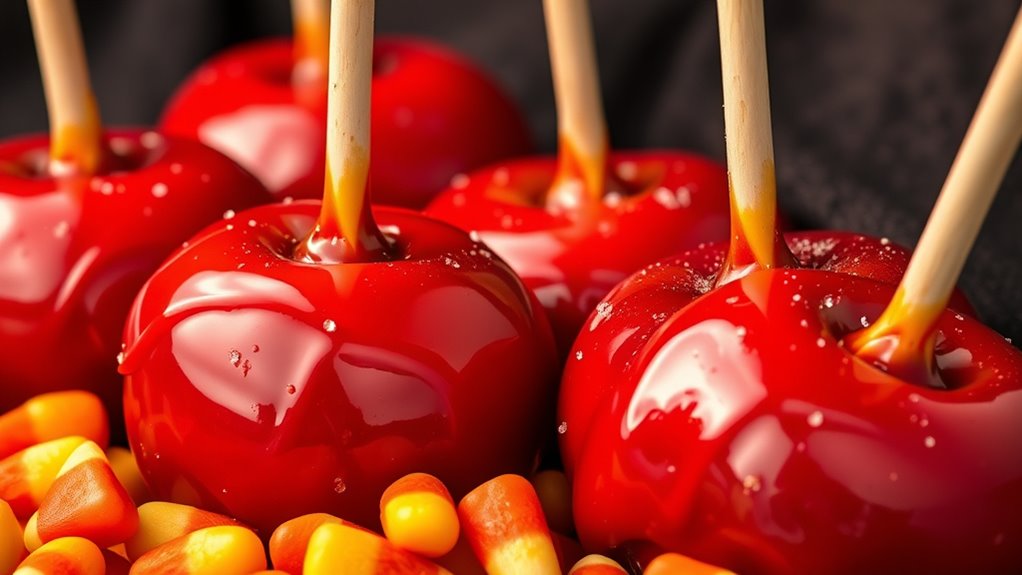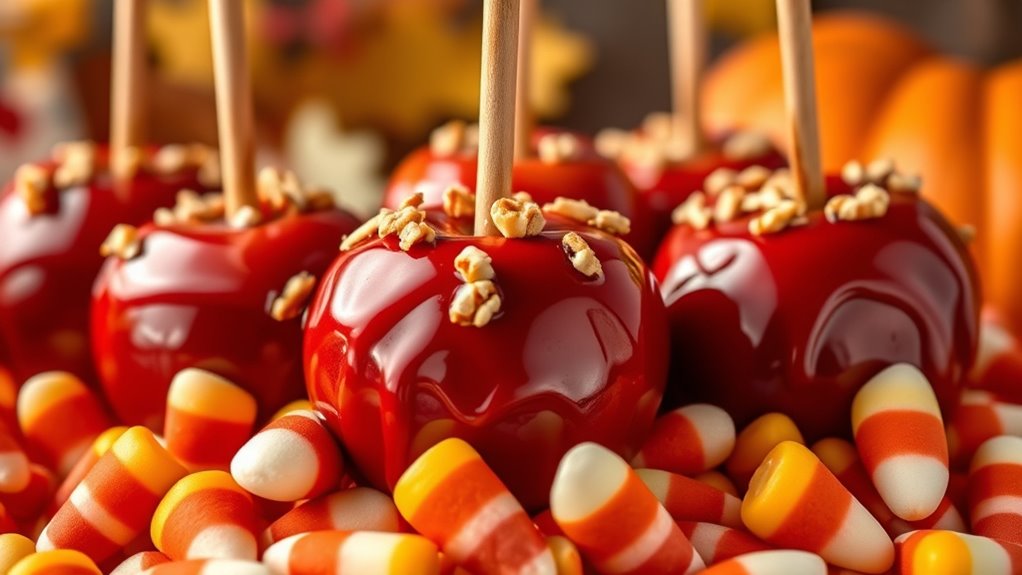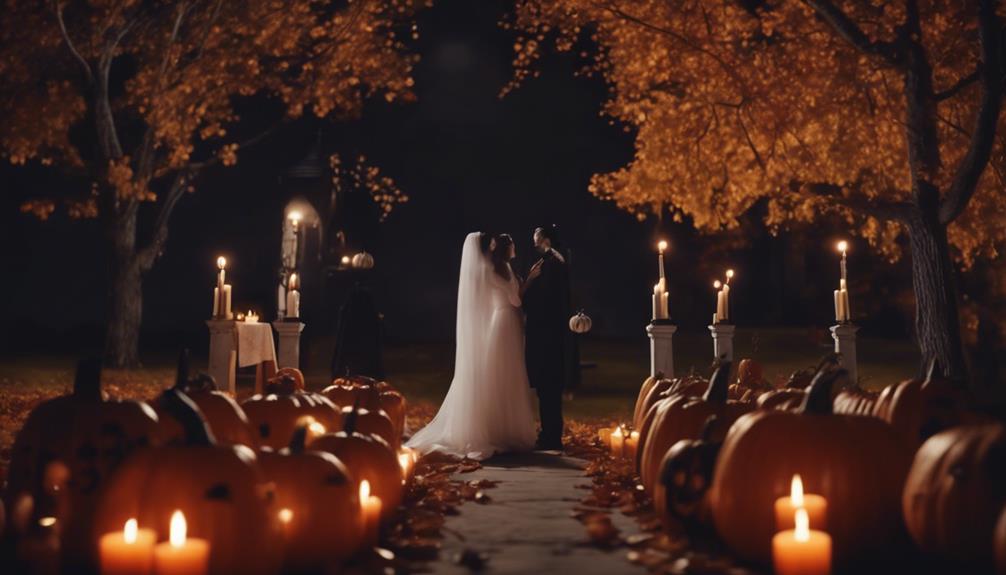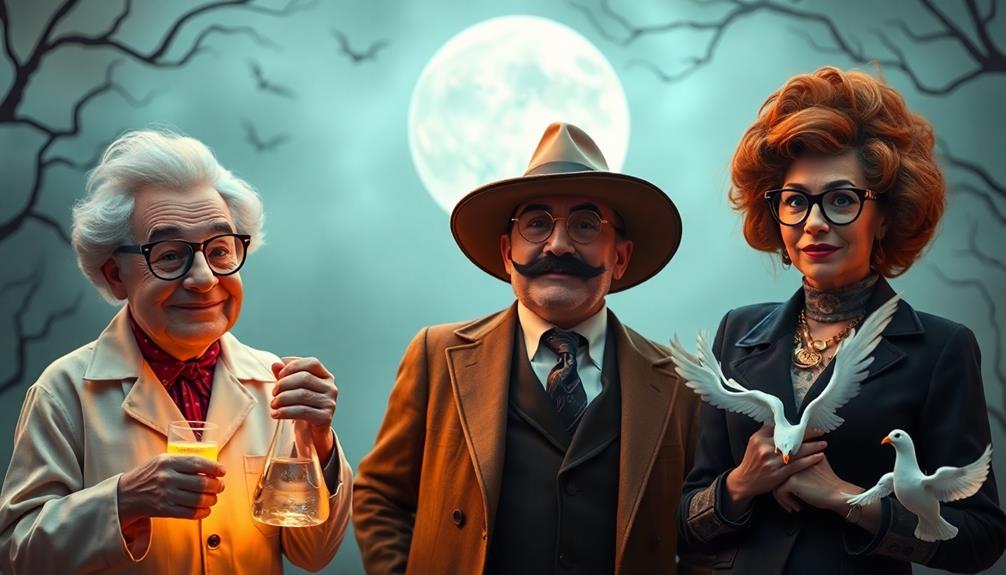Candy corn and candy apples are seasonal staples that perfectly capture Halloween’s fun and festive spirit. You’ll notice candy corn’s colorful, tri-tone design mimics corn and has a nostalgic charm, while candy apples’ shiny, customizable exterior makes them a popular centerpiece. Both treats connect you to Halloween traditions and childhood memories, remaining favorites across generations. If you want to uncover more about their history, symbolism, and how they continue to evolve, there’s plenty more to discover.
Key Takeaways
- Candy corn and candy apples are traditional Halloween treats with origins dating back to the 1880s and European harvest celebrations.
- Both candies symbolize the festive, playful spirit of Halloween and are central to seasonal traditions and community bonding.
- They have evolved with modern trends, incorporating new flavors, toppings, and creative designs while maintaining their classic appeal.
- Visually, candy corn’s tri-color design and candy apples’ shiny, colorful exterior make them eye-catching and festive.
- Their enduring popularity reflects their cultural significance, nostalgic value, and adaptability across generations.

Have you ever wondered what makes Halloween treats so irresistible? It’s not just their sweet flavor but also their rich history and the way they evolve with seasonal candy trends. Candy corn and candy apples have become iconic symbols of Halloween, each with a unique story that keeps them popular year after year. Understanding the history of candies reveals how these treats have shaped Halloween celebrations and how their popularity fluctuates with changing tastes and trends. The cultural significance of these treats demonstrates their role in fostering holiday traditions and community bonding. Candy corn’s origins date back to the 1880s, making it one of the oldest candies associated with the holiday. Initially created by the Wunderle Candy Company, its distinctive tri-color design was meant to mimic a kernel of corn, tying it directly to the harvest season. Over time, candy corn became a seasonal staple, especially during fall, thanks to its bright, cheerful appearance and sweet, mellow flavor. Its popularity has ebbed and flowed with seasonal candy trends, often influenced by marketing campaigns and nostalgic appeal. Today, candy corn remains a nostalgic favorite for many, symbolizing Halloween’s playful, whimsical spirit. Its history highlights how candies can become ingrained in holiday traditions, especially when they successfully evoke feelings of childhood and harvest time.
Candy apples, on the other hand, have a history that stretches back centuries, with roots in European traditions that celebrated the harvest season. In the United States, they gained popularity in the early 20th century, especially during fall festivals and Halloween events. The process of coating apples with a shiny layer of caramel or candy creates a mesmerizing treat that combines tartness from the apple with the sweetness of the coating. Seasonal candy trends have kept candy apples relevant, often reinvented with new flavors, toppings, or decorative themes to appeal to modern tastes while maintaining their nostalgic charm. Their shiny, colorful exterior makes them a visual centerpiece of Halloween displays, and their customizable nature keeps them trendy during the season.
Both candy corn and candy apples have thrived because they connect people to seasonal traditions and memories. Their enduring appeal isn’t just about taste but also about their cultural significance and ability to adapt to new trends. As you gather your Halloween treats, you’re enjoying more than just sugar—you’re participating in a long history of seasonal candies that have evolved alongside Halloween itself. Whether it’s the simplicity of candy corn or the personalized creativity of candy apples, these treats continue to embody the spirit of fall and festivities. Their popularity shows that when candies resonate with tradition and trend, they’re destined to remain favorites for generations to come.
Frequently Asked Questions
What Are the Origins of Candy Corn and Candy Apples?
You might wonder about the history origins of these treats. Candy corn dates back to the 1880s, created by George Renninger, symbolizing harvest and fall. Candy apples, with roots in early American fairs, gained cultural significance as a festive, nostalgic treat. Both reflect seasonal traditions and community celebrations, making them iconic symbols of autumn. Their origins highlight how foods can carry cultural meaning and connect people to seasonal festivities.
Are Candy Corn and Candy Apples Suitable for All Dietary Restrictions?
Is it possible to enjoy Halloween treats without sacrificing your dietary needs? You can find vegan alternatives and gluten-free options for candy corn and candy apples, making them more inclusive. While traditional versions might not suit all restrictions, exploring these alternatives allows you to indulge without guilt. So, don’t let dietary restrictions scare you away—there’s a sweet solution that fits your lifestyle.
How Can I Make Homemade Candy Corn and Candy Apples?
You can make homemade candy corn and candy apples as fun DIY crafts for seasonal decorations. Start by melting white, orange, and yellow chocolate for candy corn, then layer and cool it in a mold. For candy apples, coat apples with melted caramel or candy melts, and let them set. These treats add a personal touch to your Halloween decor, making your celebration extra festive and delicious.
What Are Some Creative Ways to Serve These Treats?
You can serve these treats creatively by focusing on decorative presentation; for example, arrange candy apples on a festive platter with colorful ribbons or place candy corn in mini pumpkin-shaped bowls. To add a twist, experiment with unique flavor combinations like drizzling caramel or chocolate over candy apples or mixing spices into candy corn. These ideas make your treats stand out and add a fun, personalized touch to your Halloween celebration.
Are There Any Health Concerns Associated With Eating Candy Corn and Candy Apples?
You should be aware that eating candy corn and candy apples can raise health concerns, especially related to their high sugar content, which may contribute to cavities and energy crashes. Additionally, allergy considerations are important—some candy corn contains artificial ingredients or traces of nuts, while candy apples often have allergens in toppings or coatings. Moderation and reading ingredient labels help you enjoy these treats safely.
Conclusion
As you reach for those familiar candies, remember they’re more than just treats—they’re sweet whispers of Halloween’s magic. Candy corn and candy apples paint your night with vibrant colors, like a harvest moon shining through a dark sky. These classics are your ticket to reliving childhood wonder and creating new memories. So, embrace the crunch, savor the sweetness, and let Halloween’s enchanting spell carry you into a night full of joy and wonder.










